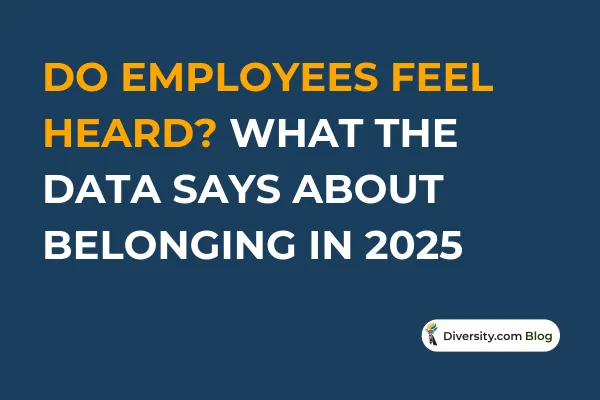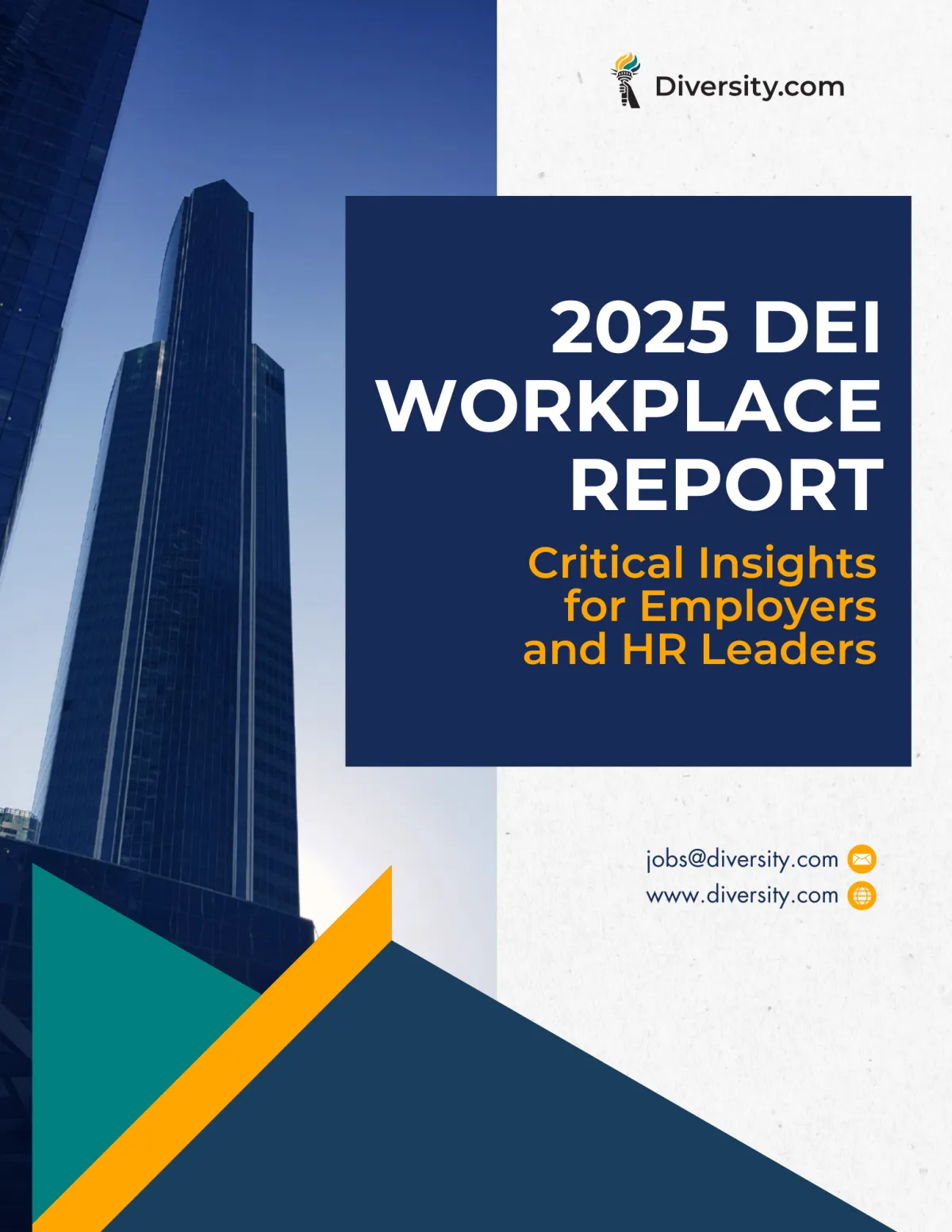
Do Employees Feel Heard? What the Data Says About Belonging in 2025
Belonging is the word you’ll find on corporate posters. But psychological safety? That’s what determines whether people actually speak up.
In Diversity.com’s 2025 Workplace Discrimination Report, 86% of professionals said they feel they belong at work. But only 76% said they feel safe speaking up when something feels off.
That 10-point gap says a lot. It’s possible to feel included—but not empowered.
Belonging vs. Psychological Safety: Why the Distinction Matters
Belonging is about feeling accepted. Psychological safety is about being able to express dissent, share concerns, or admit mistakes—without fear of punishment or ridicule.
Dr. Amy Edmondson, professor at Harvard Business School, defines psychological safety as a “belief that one will not be punished or humiliated for speaking up with ideas, questions, concerns, or mistakes” (Edmondson, 1999).
It’s one of the strongest predictors of high-performing, innovative teams.
🧠 When people self-censor, innovation stalls. And when inclusion doesn’t include safety, it’s just optics.
Silence Doesn’t Mean Safety
Harvard Business Review has consistently reported that organizations where employees feel unsafe to speak up experience lower engagement, higher attrition, and missed innovation opportunities (HBR, 2023).
In some companies, team members nod along in meetings—but debrief in Slack later. Others avoid calling out microaggressions, missteps, or uncomfortable behavior because they fear social or professional consequences.
Over time, the cost of that silence compounds.
Diversity.com’s 2025 data revealed that more than 1 in 5 employees still hesitate to report or flag workplace issues.
The risk isn’t just moral. It’s operational.
How to Create Safer Feedback Spaces
1. Set the tone early
Leaders should explicitly invite feedback, including dissent. Silence is not agreement—it’s usually hesitation.
2. Use multiple channels
Don’t rely on town halls. Use anonymous forms, one-on-ones, and team retros.
3. Normalize speaking up
Praise feedback when it happens. Reward critical thinking and curiosity, not just agreement.
4. Train managers, not just HR
Safety is built in team dynamics. Equip managers to respond without defensiveness or dismissal.
The Bottom Line
You can have belonging without safety. But you can’t have true inclusion without both.
If your people feel welcome but not heard, they may still smile in the hallway—and quietly plan their exit.
Want the full employee pulse on safety, bias, and belonging? Download the 2025 Workplace Discrimination Report.
Build Inclusive, Equitable, and Safer Workplaces with Diversity.com
At Diversity.com, we help employers and job seekers connect through inclusive job postings, flexible job packages, and trusted DEI resources.
Whether you're improving your company’s workplace culture or exploring roles where your voice matters, we’re here to support you.
Looking for data to guide your strategy? Choose a report below:
Download the 2025 DEI Workplace Report – Gain insights into diversity, equity, and inclusion trends across multiple industries.
Download the 2025 Workplace Discrimination Report – Explore in-depth findings on bias, exclusion, and psychological safety in today’s workplace.
For Employers & HR Professionals:
✔ Choose a DEI Job Posting Package – Connect with underrepresented talent using flexible, targeted options.
✔ Access DEI Insights & Reports — Browse practical guides, data-backed articles, and expert wisdom to strengthen your inclusive hiring.
✔ Join Our LinkedIn Community — Collaborate with HR and DEI professionals on hiring trends and best practices.
For Job Seekers:
✔ Find Diversity and Inclusion Jobs — Discover meaningful roles at companies that champion equity and representation.
✔ Create a free job seeker account — Apply confidently for jobs with companies that believe in equity.
✔ Read Our Latest DEI Articles — Stay informed with expert-backed insights on workplace inclusion, safety, and growth.
Every hire and every voice helps shape the future of work.
Get started with Diversity.com.
Have questions? Reach out to our team. We're here to support you.
Related Articles
Types of Workplace Discrimination: What Employees Report Most
Generational Bias: Why the Youngest and Oldest Workers Face the Most Discrimination
Are There Standards for DEI? What Employers Need to Know in 2025
Debunking the Myth: DEI Doesn’t Mean Lowering Hiring Standards
Sources & References
Edmondson, A. (1999). Psychological safety and learning behavior in work teams. Administrative Science Quarterly, 44(2), 350-383. https://doi.org/10.2307/2666999
Harvard Business Review. (2023). The Cost of Silence: Why Psychological Safety Drives Innovation. https://hbr.org/2023/02/the-cost-of-silence
McKinsey & Company. (2023). The State of Organizations 2023. https://www.mckinsey.com/capabilities/people-and-organizational-performance/our-insights/the-state-of-organizations-2023
Diversity.com. (2025). Workplace Discrimination Report.

